By Jeffrey A. Rendall, Photos Courtesy of Mizuno
NORCROSS, GA – “The MP-4, we like to say, was almost like hitting the reset button on a blade-style golf club,” remarked Chris Voshall, in discussing the background of Mizuno’s ultimate attempt to satisfy the most discerning of muscleback iron-loving golfers.
As Mizuno’s Golf Club Engineer, Voshall plays a vital role in shaping the company’s cutting-edge irons, and he thinks the MP-4 will go down as a club that plays to the ego of better players – mainly because virtually all of the usual forgiveness elements were stripped out of it during the design phase.
Voshall explains: “For the past couple years, we here at Mizuno offered the MP-67, MP-68 and MP-69 – and those were like putting a technology onto a muscleback package. For example, the MP-67 had the cut-muscle on the back, so it’s actually moving a little weight away from the muscle pad. Similarly, the MP-68 and MP-69 both had a little bit of a scallop across the muscle pad.”
The cut-muscle Voshall was referring to is a technique to combine the look and feel of a forged iron (which it is) with the playability of a cavity-backed iron by adjusting the weight in the rear and sole of the club.
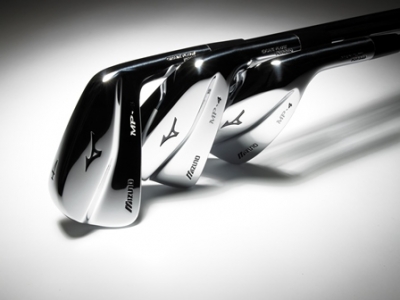 |
“But with the MP-4, we wanted to just strip down and really give the blade guy, the muscleback guy, what he’s looking for,” Voshall continued. “It’s got the thinnest top line of any of them, it’s got the thinnest sole and the smallest head length. We wanted to put everything involved in the feel, the look and the performance.”
“Which is, not to say there’s a lack of technology in the club, but there’s a dose of that. The MP-4 is a little bit of a play to the ego, where, if you’re a blade guy, you think you don’t need that help, you don’t need any forgiveness.”
Wow, I hope to get to that level someday. On most occasions, I welcome forgiveness with open arms.
Because of their goal, Voshall said Mizuno wanted to put all of the mass right in the center of the MP-4 to maximize the feel and workability of the club. He did add that there is slightly more mass down low on MP-4’s long irons (which lowers the center-of-gravity and makes the club somewhat easier to launch), but they didn’t want to “show” it.
“We wanted the MP-4 to be more like a work of art, super clean. No ‘marketing’ involved, if you know what I mean,” Voshall said proudly.
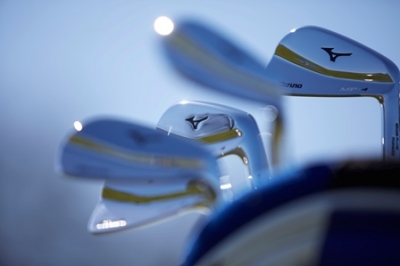 |
The MP-4 is indeed a work of art – maybe the cleanest looking blade-style irons you’ll see these days, a true throwback to an era where nearly all clubs were forged and looked like they were made by a craftsman’s hands.
But the MP-4’s are musclebacks, not true blades.
What’s the difference, you ask? “People think of blades and musclebacks as being the same thing, but they’re a little bit different,” Voshall elaborated. “Where a blade is just one plane or one surface across the back, the muscleback is more of a thinner topline with a muscle pad focused down below.”
“With musclebacks, the focus is less on forgiveness and more on putting the maximum amount of meat behind impact. It’s positioning the highest amount of mass right behind the ball or striking area.”
As a result, a muscleback iron offers you a little bit better feel because you’ve got thickness right behind impact, but it also gives you more workability. By not having the cavity (which forces weight to the sides) on the back of the club, the head is free to be more maneuverable. It’s something players can manipulate a lot more.
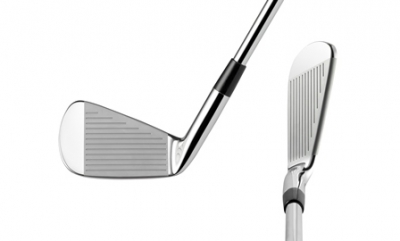 |
I was excited about the MP-4 as soon as I saw it, simply because it looked a lot like the clubs I learned the game with – and I’m guessing the irons’ squeaky clean form will attract a lot of people who took up the game before the 1990’s.
But it’s not reserved solely for the seasoned crowd. Just because the MP-4’s have a classic look doesn’t mean they aren’t significantly improved over your father’s old blades.
“This club, as opposed to a muscleback from years ago, is designed in the 3D world,” Voshall lectured. “In the past, designing a golf iron was more like a craftsman creating a shape. And where the craftsman was creating that shape, there was very little precise control over the center-of-gravity, over the flow of the topline, the flow of the sole. And just how it flowed from set to set…”
“Because the MP-4 is designed completely in the 3D world, we’re able to precisely dial-in exactly where the sweet spot is, and where the center-of-gravity is. They used to say ‘a shank is the closest thing to a perfect shot,’ because the center-of-gravity was located in the heel of the old blades. And that was only one of the handcuffs of the design process back then.”
In today’s computerized 3D world, however, engineers can manipulate the mass in such a way to place the center-of-gravity central to the face, so that there truly is a “sweet spot.” That’s where the workability comes in… and you no longer have to try and heel the ball, either.
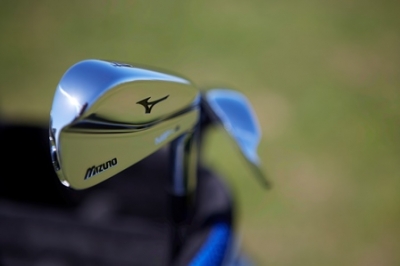 |
The 3D world translates to differences in the manufacturing process, too. At Mizuno, this is where computer design meets the master craftsman.
“Everybody is designing in the 3D world now,” Voshall said. “But most of our competitors are going straight from 3D to completely automated manufacturing – essentially cutting a mold based strictly on that data and going to mass production from there.”
“What Mizuno does with our MP line is, we still want to involve the craftsman, just because there’s only so much organic-ness and precision you can get in the 3D world. Consequently, we actually have an intermediate step between the 3D world and mass production.”
Mizuno’s club designers create everything in 3D and make CNC (which stands for Computer Numerical Control) models, or master models, directly off of their data. They then work with their craftsmen in Japan to make sure the lines are perfectly smooth and flow exactly how they desire.
“For example, on a blade, if you look at it at address, the way the topline flows into the hosel – you can’t quite get that organic flow in the 3D world on a computer that you can from a craftsman on a grinding wheel,” Voshall said.
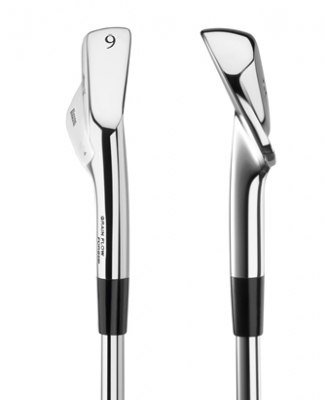 |
After the craftsman gives his okay, the data is reverse-scanned, and that’s the data that becomes the actual model for the forging process.
Take that, computer geeks.
Voshall says it’s the craftsman’s extra touch that better players are looking for, since head size and shape and flow are critical to this person. That’s where the “ego” part comes into play again. Complete automation cannot provide that valuable human input.
Mizuno’s MP line is a true blending of art and science – which helps explain why these clubs are so favored by golf purists.
The only question remaining is, is there so much “forgiveness” taken out of the club that it’s no fun to play? Voshall says looks should play a part in your choice of which irons to buy – but not necessarily at the expense of your golf game.
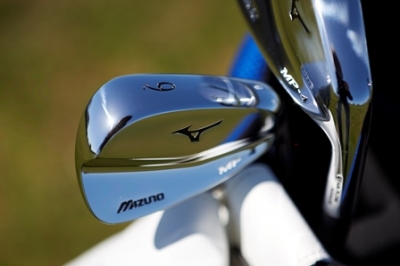 |
“At Mizuno, we always like to say, ‘Play the most forgiving thing you can stand to look at.’ For some players, it’s a blade because they demand that super-thin topline and that super-thin sole – otherwise, they’re uncomfortable with the club.”
“But for example, Luke Donald doesn’t play the blade because he’s able to find the look he wants in our MP-64 model, which has a very blade-like look at address, but also comes with built-in forgiveness.”
That’s scary stuff when a player like Luke Donald opts for a more-forgiving club. But after having tried the MP-4, I’ve found there’s nothing to be “afraid” of.
There’s no doubt, with the MP-4’s small head size, you’ll realize this is a different sort of club from the outset -- especially if you’ve been playing any kind of game improvement-type irons recently. Once you get past the “head games” aspect of the MP-4, however, you’ll fall in love with its smooth, buttery feel.
The MP-4 may remind you a little bit of the clubs you played all those years ago – which in this case, is a welcome memory. They’re not the easiest thing to hit, but if you don’t get wild with your swing and try to generate the same distance as you would with today’s stronger-lofted irons, you’ll be satisfied.
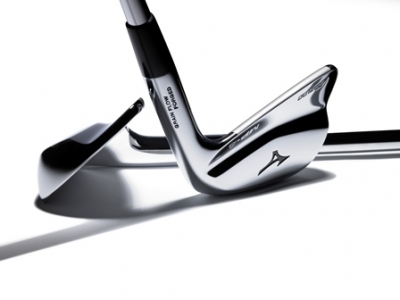 |
We don’t recommend clubs, but if you’re a blade guy who needs a traditional-looking club – for your ego or otherwise – then the MP-4 is a must-try.
At the very least, you’ll know that you’re playing the best that the marriage of technology and craftsmanship can come up with.
How’s that for a little ego boost?
Details:
Mizuno MP-4 Irons
Inquire at your higher-end golf retailers and club pro shops. Available in right and left hand with a variety of custom shaft combinations.
Check out more information about Mizuno Golf products at: www.mizunousa.com .
Note: Mizuno has also introduced several other models of irons that merit a look – you can find them on the website.
Mizuno USA, Inc. is a wholly owned subsidiary of Mizuno Corporation, one of the largest general sporting goods manufacturers in the world. Mizuno USA, Inc. manufactures and distributes golf, baseball, softball, running, track & field, and volleyball equipment, apparel, and footwear for North America. Mizuno USA, Inc. is based in Norcross, Georgia.
| Related Links | Comments on this article? | |
|
Maryland National Golf Club Hollow Creek Golf Club Rocky Gap Resort PB Dye Golf Club in Ijamsville Whiskey Creek Golf Club |
E-mail Jeff Rendall, Editor: jrendall@golftheunitedstates.com |












